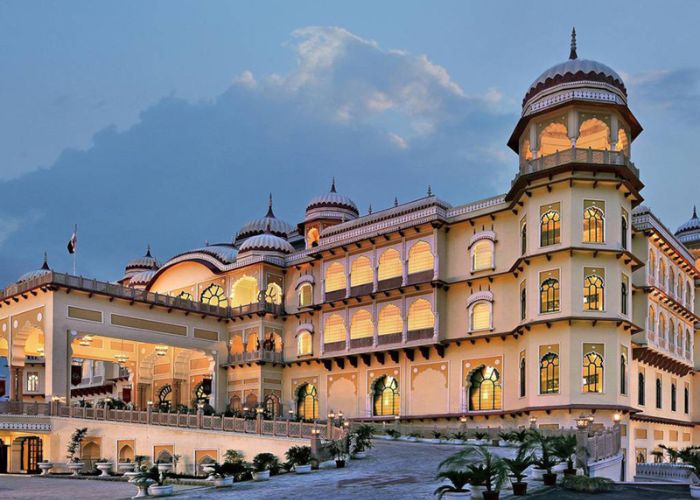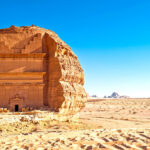Noor Mahal Rich Heritage of Royal Architecture: – In the heart of Bahawalpur, Pakistan, stands a magnificent testament to the grandeur of the bygone era- Noor Mahal. This exquisite palace, with its blend of European and Islamic architectural styles, is a jewel in the crown of Pakistan’s historical heritage. Noor Mahal, meaning “Palace of Light,” is not merely a structure; it is a symbol of the rich cultural tapestry that weaves together the history of the region.
Noor Mahal Rich Heritage of Royal Architecture
Historical Background:
Built in 1872, Noor Mahal has a fascinating history that intertwines with the royal lineage of Bahawalpur. The construction of this opulent palace was commissioned by Nawab Sadiq Muhammad Khan IV in honor of his wife, Nawab Begum. Interestingly, the inspiration for Noor Mahal’s design was drawn from the European architecture that Nawab Sadiq encountered during his travels.
Today, Noor Mahal stands as a living relic of the princely state of Bahawalpur, narrating tales of love, power, and cultural amalgamation.
Architectural Marvel:
Noor Mahal is a harmonious fusion of neoclassical and Islamic architectural styles. The exterior boasts a distinctive red brick façade adorned with Corinthian columns and intricate arches, reminiscent of European palatial structures. The interior, on the other hand, showcases the intricate craftsmanship of local artisans, incorporating traditional Islamic elements such as beautifully painted ceilings, ornate wooden doors, and delicate frescoes. Each room within Noor Mahal tells a story through its design, offering a glimpse into the royal lifestyle of the time.
Design Elements:
- European Influences: The influence of European architecture is evident in the palace’s façade. Characterized by its symmetrical layout, tall columns, and large windows. The use of red brick adds a distinct charm to the exterior, setting it apart from other structures in the region.
- Islamic Aesthetics: Noor Mahal seamlessly integrates Islamic aesthetics into its design, with intricate geometric patterns, arabesque motifs, and Quranic verses adorning the walls. The use of vibrant colors and detailed craftsmanship reflects the artistic sensibilities of the craftsmen involved in its construction.
- Courtyards and Gardens: The palace is surrounded by well-maintained gardens and spacious courtyards that served both aesthetic and practical purposes. These areas not only enhanced the visual appeal of Noor Mahal but also provided the royal family with private spaces for relaxation and recreation.
Transformation Over Time:
Over the years, Noor Mahal has undergone several transformations, adapting to the changing needs of its occupants. Initially intended as a residence for the royal family, it later served as a state guest house and army barrack during the British colonial period. Despite these changes, the palace managed to retain its architectural splendor.
In recent times, efforts have been made to restore and preserve Noor Mahal, ensuring that future generations can continue to marvel at its beauty. Restoration projects have focused on maintaining the authenticity of the original design while addressing structural issues caused by the passage of time.
Cultural Significance:
Noor Mahal stands as a symbol of cultural syncretism, reflecting the openness of the rulers of Bahawalpur to diverse influences. The palace represents not only the architectural prowess of its time but also the cultural exchange that occurred between different civilizations. It serves as a living testament to the historical interplay between the East and the West. Showcasing how artistic styles can transcend geographical boundaries.
Visitors to Noor Mahal have the opportunity to immerse themselves in the cultural and historical tapestry of the region. The palace has become a popular tourist destination, attracting history enthusiasts, architecture aficionados, and those seeking a glimpse into the regal past of Bahawalpur.
Preservation Efforts:
Preserving a structure of such historical significance comes with its challenges. Conservationists and heritage organizations have played a crucial role in ensuring the longevity of Noor Mahal. Their efforts include not only structural restoration but also the implementation of measures to protect the palace from environmental factors and human impact.
Government initiatives and public awareness campaigns have further contributed to the conservation of Noor Mahal. The recognition of its historical importance has led to increased efforts to maintain the palace as a cultural asset. Fostering a sense of pride among the local population and the broader community.
Conclusion:
Noor Mahal stands as a living legacy, echoing the tales of Bahawalpur’s royal past. Its architectural marvel, a harmonious blend of European and Islamic styles. Continues to captivate the imagination of visitors from around the world. Beyond its aesthetic appeal, Noor Mahal serves as a bridge between the past and the present. Reminding us of the rich cultural heritage that forms the foundation of our identity.
The preservation and appreciation of structures like Noor Mahal are crucial in fostering a sense of cultural continuity and pride. As we marvel at the intricacies of its design and immerse ourselves in its historical significance. We are not just witnesses to history but active participants in the ongoing narrative of our shared heritage. Noor Mahal stands as a beacon, illuminating the path to a deeper understanding of our past. And inspiring future generations to cherish and protect the treasures that connect us to our roots. Hope you like “Noor Mahal Rich Heritage of Royal Architecture”.







